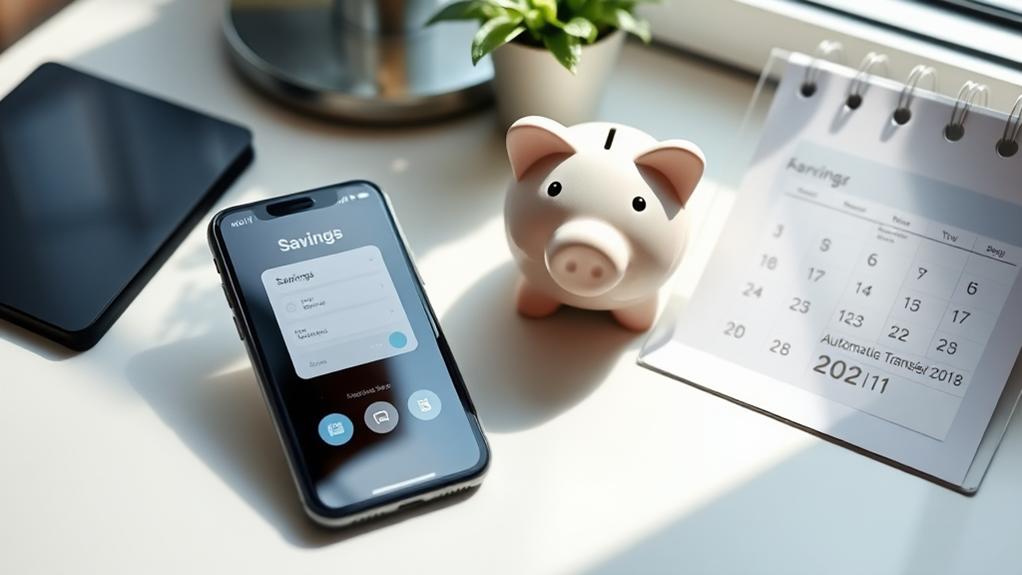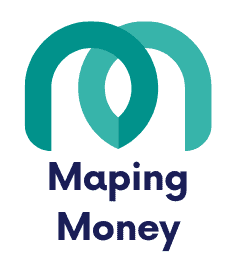7 Essential Money Saving Tips for Beginners
Start your money-saving journey by establishing a clear savings plan with specific goals. Determine how much you can save using the 50/30/20 rule, which suggests allocating 20% of your income to savings. Explore various savings accounts, including high-yield and money market options, to grow your funds safely. Consider time deposit accounts for better interest rates and stability. Automate your savings transfers to make it effortless. Finally, practice mindful spending; wait before making non-essential purchases and track your habits. Stick with these tips, and you'll soon find that saving gets easier as you progress. There's more to discover!
Key Takeaways
- Set specific savings goals to provide clarity and direction for your financial journey.
- Implement the 50/30/20 rule to allocate your income effectively: 50% essentials, 30% wants, 20% savings.
- Automate savings transfers on payday to ensure consistent contributions to your savings accounts.
- Build an emergency fund starting with a small goal, like $500, to secure your finances.
- Track your spending habits to identify areas for cutbacks and enhance mindful spending practices.
Start With a Savings Plan

Creating a solid savings plan is your first step toward financial stability. Start by identifying specific savings goals that resonate with your aspirations, whether it's building an emergency fund, saving for a dream vacation, or funding your education. By prioritizing these goals, you'll give your savings efforts clear direction.
Next, consider using a high-yield savings account. This reliable money storage option not only keeps your savings safe but also allows your money to grow through interest. It's an excellent way to make your savings work for you.
As you develop your savings strategy, allocate funds based on your established priorities. This approach guarantees that all aspects of your financial life are considered, making budgeting financial easier and more effective. Don't forget to regularly review and adjust your savings goals. Life changes, and so should your strategy to stay aligned with new circumstances.
Determine Your Savings Amount

Once you've established a savings plan, the next step is figuring out how much you can realistically set aside each month. Start by analyzing your monthly income against your expenses. A practical guideline is the 50/30/20 rule: allocate 50% of your income to essentials, 30% to wants, and 20% to savings.
Here's a quick view of how you might break it down:
| Category | Percentage of Income |
|---|---|
| Essentials | 50% |
| Wants | 30% |
| Savings | 20% |
| Emergencies | Start at $500 |
| Automated | Yes |
Begin with a small, achievable savings goal, like $500 for emergencies. As you refine your budgeting financial habits, gradually increase your savings capacity. Automating your savings by setting up transfers on payday can help you save money consistently. Regularly review and adjust your savings percentages based on changes in your financial situation to guarantee you stay on track. By taking these steps, you'll cultivate strong savings habits and move closer to financial freedom.
Explore Savings Account Options

When it comes to building your savings, choosing the right savings account is essential. These accounts are designed for deposits and typically limit the number of withdrawals and transfers each month, making them perfect for emergency funds and planned purchases. Start by comparing the interest rates offered by various banks. Many institutions provide different rates, so regularly assess account terms to optimize your savings potential.
Don't overlook online banks, as they often offer higher interest rates compared to traditional brick-and-mortar banks, allowing you to grow your savings faster. Plus, remember that the Federal Deposit Insurance Corporation (FDIC) insures savings accounts up to $250,000 per depositor, giving you peace of mind about your money's safety.
To make saving effortless, set up automatic transfers to your savings account on payday. This way, you'll consistently contribute to your savings without the temptation to spend. By exploring savings account options and utilizing automatic transfers, you're taking proactive steps toward financial freedom, ensuring your hard-earned money works for you.
Consider Money Market Accounts

Money market accounts can be an excellent choice for those looking to earn higher interest on their savings while maintaining some flexibility in accessing funds. These accounts typically offer better interest rates than traditional savings accounts, making them a smart option for achieving your savings goals. Here are some key benefits to take into account:
- Higher interest rates: Money market accounts often provide better returns, helping your savings grow faster.
- Easier access to funds: You can withdraw money via checks and debit cards, offering more convenience than a standard savings account.
- Encouragement to save: With a higher minimum balance requirement, you're motivated to save larger amounts, ranging from $1,000 to $10,000.
- Withdrawal limits: Monthly limits on withdrawals (usually around six) can help you maintain your focus on saving while still allowing some access to your money.
Before you jump in, regularly assess the terms and interest rates of different money market accounts, as they can vary widely between financial institutions. This way, you'll maximize your savings potential and make sure your money works harder for you.
Utilize Time Deposit Accounts

If you're looking to further enhance your savings strategy, time deposit accounts, or certificates of deposit (CDs), can be a great option. These accounts typically offer higher interest rates than traditional savings accounts, making them a lucrative choice for achieving your savings goals. By locking in your funds for a specific duration—ranging from 1 month to 10 years—you create a structured plan for your budgeting and financial growth.
However, be cautious about early withdrawals, as they often come with penalties that can cut into your earnings. It's wise to shop around since many financial institutions provide various terms and interest rates, helping you find the best fit for your ambitions.
| Pros | Cons |
|---|---|
| Higher interest rates | Early withdrawal penalties |
| Structured savings plan | Funds are locked for a term |
| FDIC-insured up to $250,000 | Limited access to funds |
Utilizing time deposit accounts can be a smart move in your journey toward financial freedom, allowing your savings to grow while ensuring your funds remain secure.
Implement Automatic Savings

One effective way to boost your savings is by implementing automatic savings. By setting up automatic transfers to your savings account on payday, you can "pay yourself first." This guarantees that your savings are prioritized before any spending on daily expenses. Research shows that individuals who automate savings are 20% more likely to reach their financial goals.
To get started, consider these key steps:
- Schedule regular contributions, like a percentage of your paycheck or a fixed dollar amount.
- Use tools offered by banks and financial institutions to make the process seamless.
- Regularly review and adjust your contributions to align with changing financial goals.
- Keep an eye on your spending habits to confirm you stay on track.
Practice Mindful Spending

In today's consumer-driven world, practicing mindful spending can greatly enhance your financial well-being. Start by implementing a 24-hour waiting period before making any non-essential purchases. This simple step reduces impulse buying, allowing you to carefully consider whether the item truly aligns with your values.
Next, calculate the cost of items regarding hours worked to gain perspective on their true value. This method fosters thoughtful spending decisions, helping you prioritize your budget and save money.
You might also try the "envelope system" by allocating cash for different spending categories. This technique prevents overspending and encourages disciplined financial habits. To become more aware of your spending patterns, track your habits over a month. Identifying areas where you can cut back will boost your budgeting efforts.







